Updated September 2023.
In the world of social media marketing, a Facebook Group is a powerful tool for building a community and promoting your brand.
After the Facebook algorithm update that deprioritized brand content several years ago, Groups have become even more important for connecting with your followers.
However, growing a Facebook Group from scratch can be a daunting task, especially if you don’t have a budget for paid advertising. But fear not, because it’s absolutely possible to build a thriving Group without spending a dollar!
Whether you’re a small business owner, a marketer or a community manager, these tips will help you increase your Group’s visibility, engagement and member base. We’ll show you how to grow a Facebook Group from 0 to 10,000 members using proven strategies that don’t require any money.
We can count on them to bring new ideas to the table consistently
What Is a Facebook Group?
A Facebook Group is a place where an online community can come together to engage on a shared interest, whether that’s a cause, an issue or an activity. A Group is not the same as a Facebook Page (aka Facebook Business Pages), which was designed to be the official Facebook presence for brands, business and celebrities.
For example, let’s say you’re a fan of the Netflix show Stranger Things. If you want to keep up to date with the latest information about the show, you’d connect with the official Facebook Page:
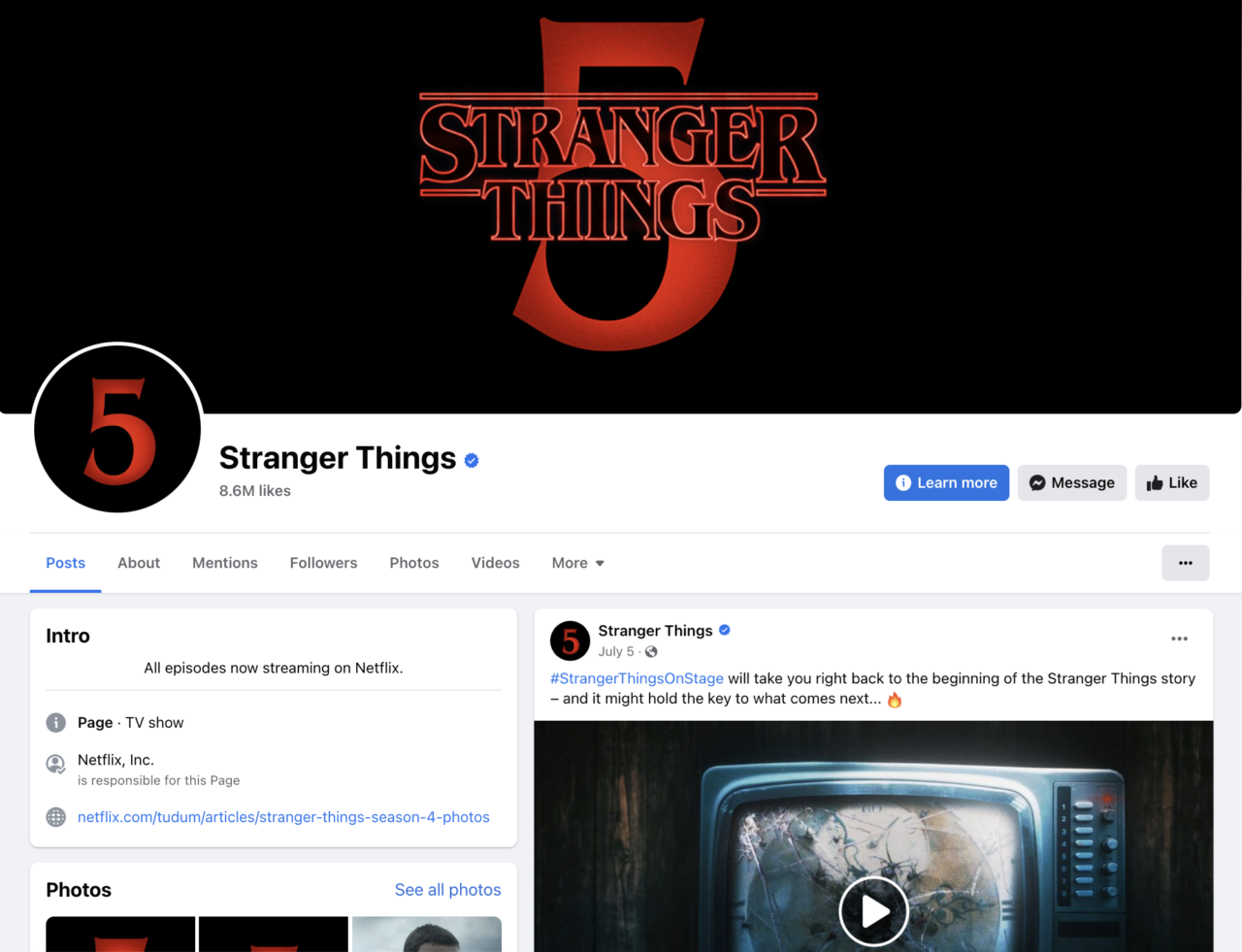
Alternatively, you could join a Stranger Things Facebook Group to chat about what’s happening on the show with fellow fans:
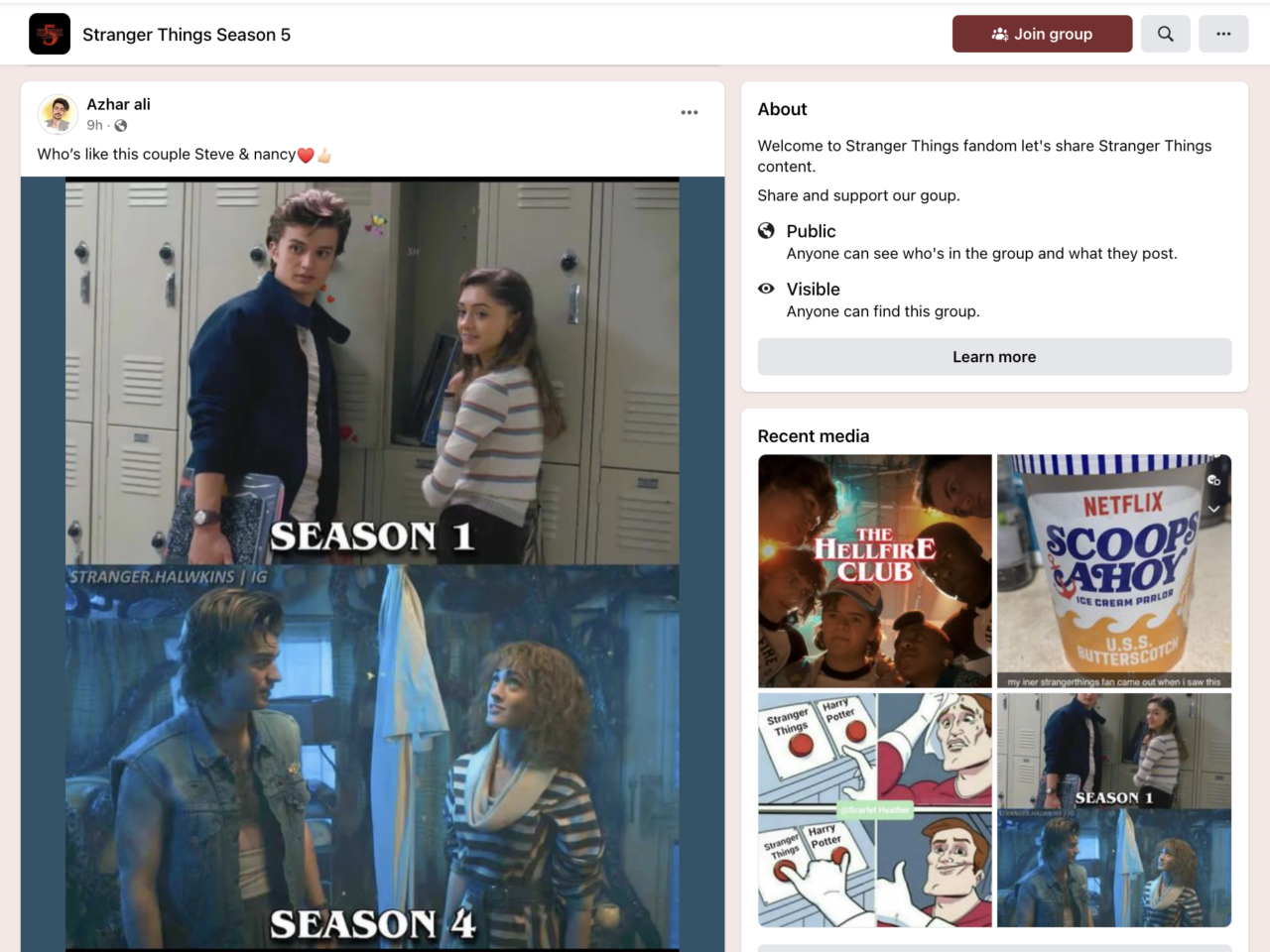
There’s one other key difference. Whereas Facebook Pages are automatically public, meaning that anyone can see them, Groups can be set up in one of three ways:
- Publicly Available: Anyone can join.
- Administrator Approval: The Facebook Group admin reviews applications to join and decides whether or not to approve them.
- Private Group: Group membership is by invitation only.
The Benefits of a Facebook Group Page
You might already be posting regularly on LinkedIn and other social networks, alongside a host of paid and organic search activity. So, what’s so special about having a Facebook Group? Why should you be paying attention?
Well, the numbers speak volumes:
- More than 1.8 billion people use a Facebook Group every month.
- There are over 70 million admins and moderators running active Groups.
- More than half of all users are in five or more Groups.
- The median number for Groups ranges from 25 to 100 people (in this particular survey).
- 77% of people surveyed say the most important group they’re part of now operates online:

Fun fact: In 2018, Zuckerberg said he wanted to see the number of users in these Groups climb to one billion by 2024. He reached that goal more than one year early!
Practically speaking, they’ve become a necessity for brands on Facebook since the site tweaked its algorithm at the start of 2018 to promote more social media posts from family and friends and less commercial content. This move limited the reach of organic posts from businesses, forcing them to choose between investing more money in Facebook Ads or building a vibrant Group to continue reaching their target audience on the platform.
Below are the top benefits of having a Facebook Group:
- Generates Better Engagement: Facebook Groups have far better engagement than fan pages and can create an active community centered on your products or services. If you’re anything like us, you’ll regularly interact with half a dozen or so Groups for exclusive content or just for a feeling of community with other members. They can be professionally focused, hyper-locational, service-based or related to your hobbies and interests.
- Helps You Connect With People Sharing Similar Interests: Facebook Groups are created around specific topics, niches, hobbies, industries or causes that might not have a large presence on other social media platforms. By joining or creating a Group, you’re likely to encounter individuals who are experts, enthusiasts or professionals in the field.
- Makes It Easier for You to Share Important Announcements: Group posts often appear prominently in members’ feeds, increasing the likelihood of your announcement being seen. Besides, announcements within the Group don’t get lost in the noise of a general feed. Group members are more likely to pay attention to content that’s relevant to their interests.
- Helps You Get Quick Feedback: Facebook Groups foster open communication and encourage members to share their opinions. They also let you create polls and surveys to collect structured feedback. Polls are quick and easy for members to respond to, making them a useful tool for gathering insights.
- Offers Networking Opportunities: Groups can serve as virtual networking events. You can connect with professionals, experts and peers in your industry or field. Networking opportunities within a Group can lead to collaborations, partnerships and even job opportunities.
- Helps You Create a Fan Base: As you engage with new Group members and consistently provide valuable content, you can attract a loyal following. These enthusiastic members can become your advocates, spreading the word about your brand or content and contributing to the growth of your fan base.
- Enhances Visibility for Your Content: Facebook’s algorithm tends to prioritize content from Groups in users’ news feeds. This means that posts from Groups are more likely to appear prominently in members’ feeds compared to posts from personal profiles or Pages. Also, since Facebook Group members have joined the Group based on shared interests, the algorithm considers Group content as highly relevant to them.
- Builds Brand Loyalty: Creating a Facebook Group centered on your brand or product gives your customers and followers a dedicated space to connect, share and interact. In a Group, you can also interact with members on a more personal level compared to public posts. Responding to comments, addressing questions and acknowledging members’ contributions humanizes your brand and builds a stronger connection.
Considerations Before Starting a Facebook Group
If you’re convinced that a Facebook Group can play a vital part in your brand’s social strategy, there are a few key things to consider before you launch.
Define a Clear Purpose
Ask yourself why you want to launch and grow your Facebook Group. Let’s assume the reason isn’t simply to acquire thousands of followers, but also to drive sales or generate leads. This needs to be reflected in your Group’s Facebook posts — through exclusive offers, previews of upcoming product releases, or video tutorials demonstrating how your product or service works.
Whatever your ultimate goal, you need to be able to measure your performance. Do this by setting actionable KPIs using the “SMART” methodology:

Time Commitment
Like any organic marketing tactic, Facebook Groups don’t blossom overnight. Real effort will make your Group a success and give users a reason to sign up. If you can’t commit time or resources to your Facebook Group, don’t expect a strong, engaged community on the platform.
But avoid outsourcing Facebook Group management, at least until you’ve set a Group tone. Your Group is an intimate setting where you’re facilitating conversation, so it should be run by someone who knows your brand inside and out.
Moderation and Guidelines
Clearly outline the rules and expectations for Group behavior, content and interactions; mention respectful communication, spam prevention, self-promotion rules, language use, appropriate content, etc.
Use examples to show what’s allowed and what isn’t. This reduces confusion among members. Decide how strictly you’ll enforce the guidelines (consistent enforcement maintains the group’s integrity). Communicate the guidelines when members join, and have them easily accessible in the Group description or pinned post. If needed, enable post approval by moderators before they appear in the Group.
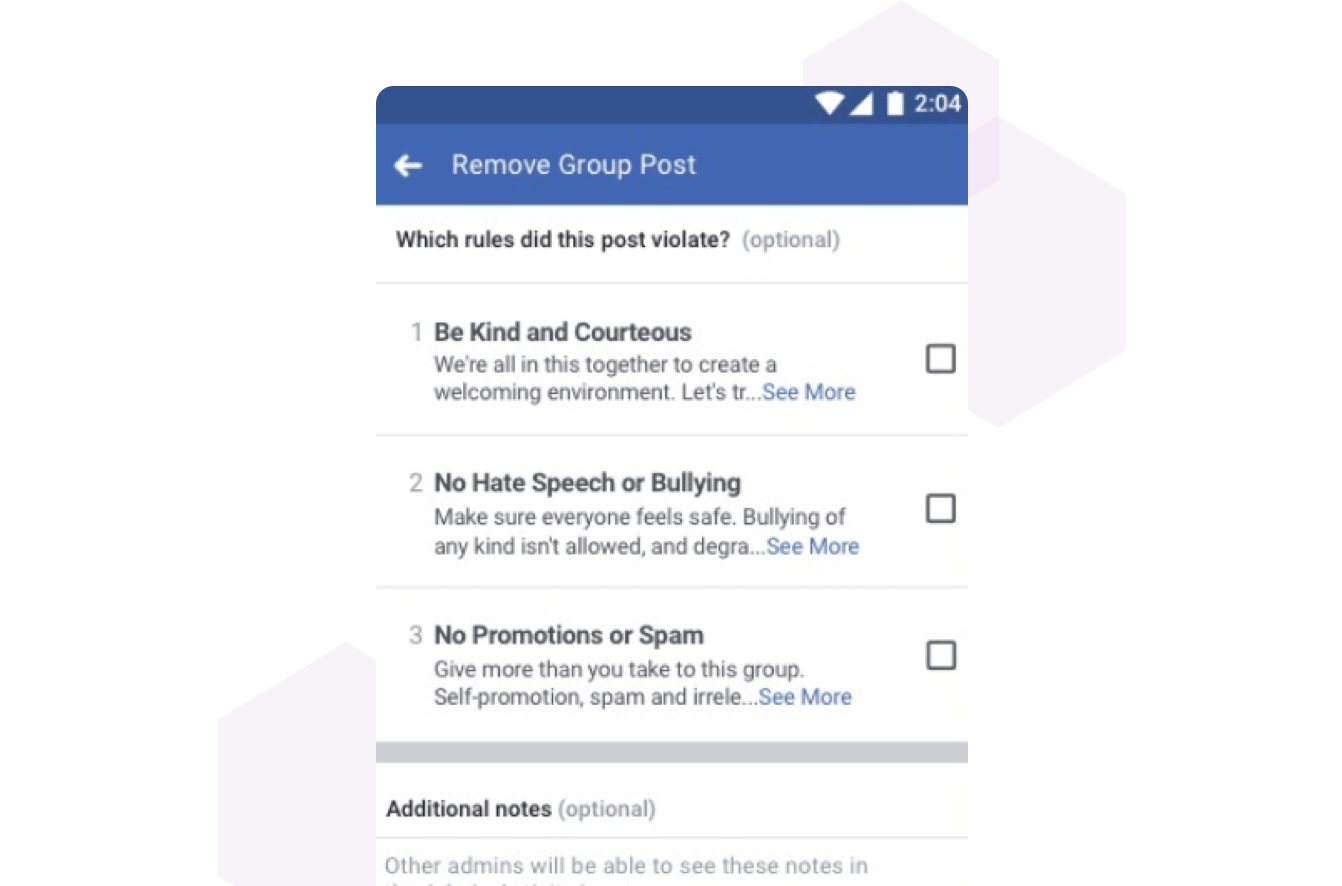
Content Strategy
Create a social content calendar outlining when and what you’ll post. Plan content in advance to maintain consistency and avoid last-minute scrambling. Identify key content categories that resonate with your target audience and align with your Group’s niche: tips and tutorials, industry news, member spotlights, discussions, challenges, behind the scenes, etc.
Use a mix of content formats to keep your Group dynamic and engaging. You can also run contests, challenges or quizzes to actively involve members and encourage participation.
Success Metrics
Set a target for the number of new group members you aim to attract within a specific time frame. Monitor the growth rate to ensure you’re consistently bringing in new members. Similarly, you should also monitor other metrics like engagement rate, post reach, comments per post, retention rate and conversions.
How Do I Set Facebook Group Rules?
The best Groups have clear guidelines in place about how they operate. This sets user expectations from the moment they join and keeps things running smoothly (as long as Group admins enforce them).
Again, this might sound obvious, but we’ve seen plenty of Groups that don’t do this — and they rarely work as well as those that do.
Creating rules for your Group is simple if you follow these steps:
- From your News Feed, click on Groups (on the left-hand side menu for desktop and the right for mobile), and select your Group. If you don’t see Groups, click See more.
- Click on Group Rules on the left menu.
- Click on Get Started, then click to add from the example rules or write your own.
- Click on Create.
- To adjust the order in which rules appear, click on the icon with the six gray dots, and drag and drop the rules into the order you’d like.
So, what should your rules look like? The guidelines you put in place will obviously depend on your brand and audience, but as a starting point, here are the kinds of things you should include:
- Group Description: An in-depth explanation of the Facebook Group’s background.
- Group Goals: Your goals for the community, such as promoting Group chats about a certain topic.
- Group Privacy: A clear explanation of what sort of activity is considered “spam” or disrespectful to other members, and the actions you’ll take to police it. This is important to maintain the safety and comfort of all members.
- Group Resources: A rundown of resources available to Group members, like videos and guides, and how to find them.
- Group Names: A list of all current admins, plus details of their authority level.
Once you’ve created your rules, save them in a Facebook document and make this your pinned post, so that they’ll appear at the top of the Group at all times.
You’ll also need to dedicate the time to enforce your rules. If you can’t commit the time yourself, you’re going to need to either bring on moderators (volunteer or paid) or invest in a different marketing tactic.
Facebook Group Do’s and Don’ts
Over the past few years, we’ve been a part of dozens of Facebook Groups, and we’ve picked up plenty of insights along the way about what to do and what to definitely not do when running one:

Once you’ve got the basics down, you’re in a great position to shift your focus toward increasing your membership. Follow these tips, and there’s no reason why you won’t be able to grow your Facebook Group to thousands of members without having to spend a single dollar.
How to Grow a Facebook Group
So, you’ve put in the hard work. You’ve figured out what you’re trying to achieve, you’ve got the time and resources to make it happen, and you’ve drawn up a clear set of guidelines.
Now, let’s discuss the best tips on how to grow your Facebook Group.
Give People a Compelling Reason to Join
Wondering how to grow your Facebook Group fast? Here are some excellent ways to create a compelling reason for users to join your Group:
- Use the “About” Section: This can help explain exactly what makes your Group so great. (It’s found at the top left of the Group page.) Detail the Group’s purpose, the sort of Group posts they can expect to see and the kind of experience that users can expect. You’ve only got 3,000 characters to play with, so use them wisely.
- Give Users an Incentive to Sign Up: We’re not saying you have to give away a discount code or free shipping the second they join, but you should outline your value proposition. For example, let them know if you run weekly giveaways, competitions and promotions that are exclusive to Group members, or promise to give them the first look at your upcoming product launches. Give them a feel for the variety of content they’ll be able to find in your Group, including resources like lead magnets, scripts and templates.
- Pick an Engaging Theme for Your Group: It should be something that people will want to talk about with other like-minded people. Take a leaf out of social media maven Sunny Lenarduzzi’s book; she has more than a dozen Groups, but significantly, not one of them is about her. Instead, they’re based on topics that are relevant and interesting to her audience.
Inform Your Existing Audience
Unless you’re a completely new brand, you’ll already have some sort of audience, whether that includes visitors to your website, previous and prospective customers, subscribers to your newsletter or readers of your blog.
Let them know that your Facebook Group exists:
- Mention it in email blasts. Many Facebook Groups adopt this strategy to cross-promote and encourage users to join them. For example, digital graphics service Bannersnack created an FB Group to connect with its clients and then promoted the Group through email newsletters like this one:

- Reference it on your website and personal Facebook account, and provide the Facebook Group link. This tactic is particularly useful for people searching for tips on how to grow a private Group.
- Drop a call to action into your blog posts. (For example, “Like what you read? Be the first to know about our latest guides by joining our Facebook Group.”)
- Use exit pop-ups to drive users toward your Group.
Get in Front of New Audiences
While there’s certainly value in building a tight-knit community of people who are long-time followers of your brand, chances are you’ll also want to attract users who aren’t so familiar with you.
When it comes to getting in front of new audiences, one of the best marketing strategies is ads, but if you don’t want (or lack the budget) to run paid activity, you’ll need to get a bit creative. Here are a couple of our favorite tried-and-trusted ways to promote your Facebook Group:
- Guest Blogging: Reach out to a website owner with a relevant audience and offer to write about a topic that would interest them — in return for mentioning (and, ideally, linking to) your Group.
- Offer Yourself Up as an Interviewee: Ask people to interview you (or some other figurehead for your business) on their blog or podcast. You don’t need to be a big name; you just have to have something interesting to say. Just be sure to mention your Facebook Group.
- Create Webinar Content for Group Members: Offer your members exclusive access to a webinar. Promote it outside the Group — in your newsletters and via your other social profiles — to get the word out. For bonus amplification, get a co-presenter on board and ask them to promote it to their audience, too.
- Reach Out to Influencers: Identify people with large, engaged followings who operate in the same space as you and ask them to promote your Facebook Group. While you’ll almost certainly need to give them a reason to do so, this doesn’t necessarily mean paying them. If your content is of high quality and genuinely unique, there’s a much better chance that influencers will be prepared to recommend you.
- Cross-Promote on Other Facebook Groups: Yes, you can certainly cross-promote your new Group and encourage existing members to join your group!
These approaches can be really effective, but there are no guarantees that people will say yes. If you ask 100 people to guest post or interview for them, maybe only five to 10 will agree. Don’t take it personally; instead, keep going. Eventually, the numbers will pay off for you.
Take Advantage of Live Streaming to Drive Visibility
Creating videos is more likely to get your Group noticed organically, which in turn gives you the opportunity to promote your Facebook Group without having to shell out any cash. That said, not all videos are created equal: People watch live video 3x longer compared to videos that aren’t live.
In short, Facebook Group owners should be using videos to get in front of more users, generate more engagement and encourage people to join your Group. People are often intimidated at the thought of creating Facebook video content, but it’s really pretty simple thanks to the site’s Live and Watch Party features.
Use Facebook Live
As its name suggests (and as you probably already know), Facebook Live allows you to broadcast live video to a Group or Facebook Page. Seeing as we’re trying to grow your Facebook Group faster, you’ll want to go live from your Page.
Struggling for a topic for your video? Draw inspiration from the news and trends affecting your audience.
Let’s say you’re running a marketing agency. Create a video to cover your reaction to a big development in the industry, such as an algorithm update by Google or the launch of a new feature by Facebook. If it makes for a good blog topic, chances are it’ll make for a good video.
Write down some talking points, do a couple of rehearsals and give it a go. We’ve found it’s often easier (and less intimidating) if you stage the video as a discussion with a colleague or a fellow expert.
To go live from a phone or tablet, just follow these simple steps:

Whatever topic you choose, remember to mention your Facebook Group and encourage viewers to join for exclusive video content (and more). Which brings us to Watch Parties…
Collaborate With Influencers
Partnering with relevant influencers helps your FB Group reach a wider audience.
Look for micro influencers who are active in your niche and have an engaged and relevant audience. Check their social media platforms, content quality, engagement rates and alignment with your Group’s focus.
Understand the demographics, interests and preferences of the influencer’s social media followers. Ensure that their audience aligns with your Group’s target members.
Suggest collaboration ideas that suit the influencer’s strengths and content style. This could involve a live Q&A session, a guest post, a webinar or hosting a themed discussion. Emphasize how the collaboration can benefit both parties. It’s not just about your Facebook Group; explain how their involvement can help them connect with a new audience.
Discuss the specifics of the collaboration, including content format, date, time and any compensation, if applicable. Also, offer any necessary information, guidelines and resources that the influencer might need for their contribution.
Finally, when the collaboration goes live, promote it across your social media channels and within the Facebook Group.
Use SEO to Drive Traffic from Search to Your Facebook Group as a Lead Magnet
SEO is another powerful tool when it comes to growing your Facebook Group. By optimizing your website to rank for certain related keywords, you can capture that traffic and redirect it to your Group.
For example, if you run a paleo Facebook Group, work on ranking for “paleo diet recipes” on Google. Then use a pop-up on your website landing page to direct those blog visitors to your related Facebook Group.
Turn Your First 500 Facebook Group Members into Group Evangelists
Once your Facebook Group gets to a certain size, growing it further becomes less about your own direct actions and more about evangelizing your existing audience by making them feel like a key part of your journey.
Remember, the larger your Group, the greater potential it has to grow quickly. Just don’t be afraid to ask your members for a little help.
Use Other Groups for Cross-Promotion
Ask your members who else should be in the Group and incentivize them to bring in new members by offering them a free e-book, a place on an exclusive webinar or even some type of promo code. This can be particularly effective when your members are in other relevant Groups, providing them with an easy platform to promote your Facebook Group.
A word of caution here, though: While some Group admins will be more than happy for you to engage in a bit of cross-promotion, others will frown on it and might even kick you out. They’re well within their rights to do this; it’s their Group and their rules.
Do what we do: Reach out to admins before you try to coax their members into your Facebook Group. Good manners cost nothing. Ask really nicely, and some admins might even be willing to pin your promotional post for a day or so, guaranteeing you plenty of visibility.
Spread the Word Through Social
While your potential members obviously have Facebook profiles, chances are they’ll also be active on other social media platforms. Encourage your existing members to link to your Facebook Group on other (relevant) social networks: Instagram, Quora, Reddit, Tumblr or Twitter.
As with the previous step, you might want to incentivize them to do this. But if your Group is genuinely useful, funny or interesting (or even all three), it should simply make sense for members to reference it in their conversations on other platforms. Say your Facebook Group is dedicated to curating the best Indian food recipes … why wouldn’t your members want to link to it if they come across a similar discussion on a different site?
Bonus: Use Your Facebook Group to Quickly Grow Your Email List
Here’s an underused hack you’ll want to know: A Facebook Group is one of the best ways to build an email list. That’s because Facebook allows you to set up new membership questions:
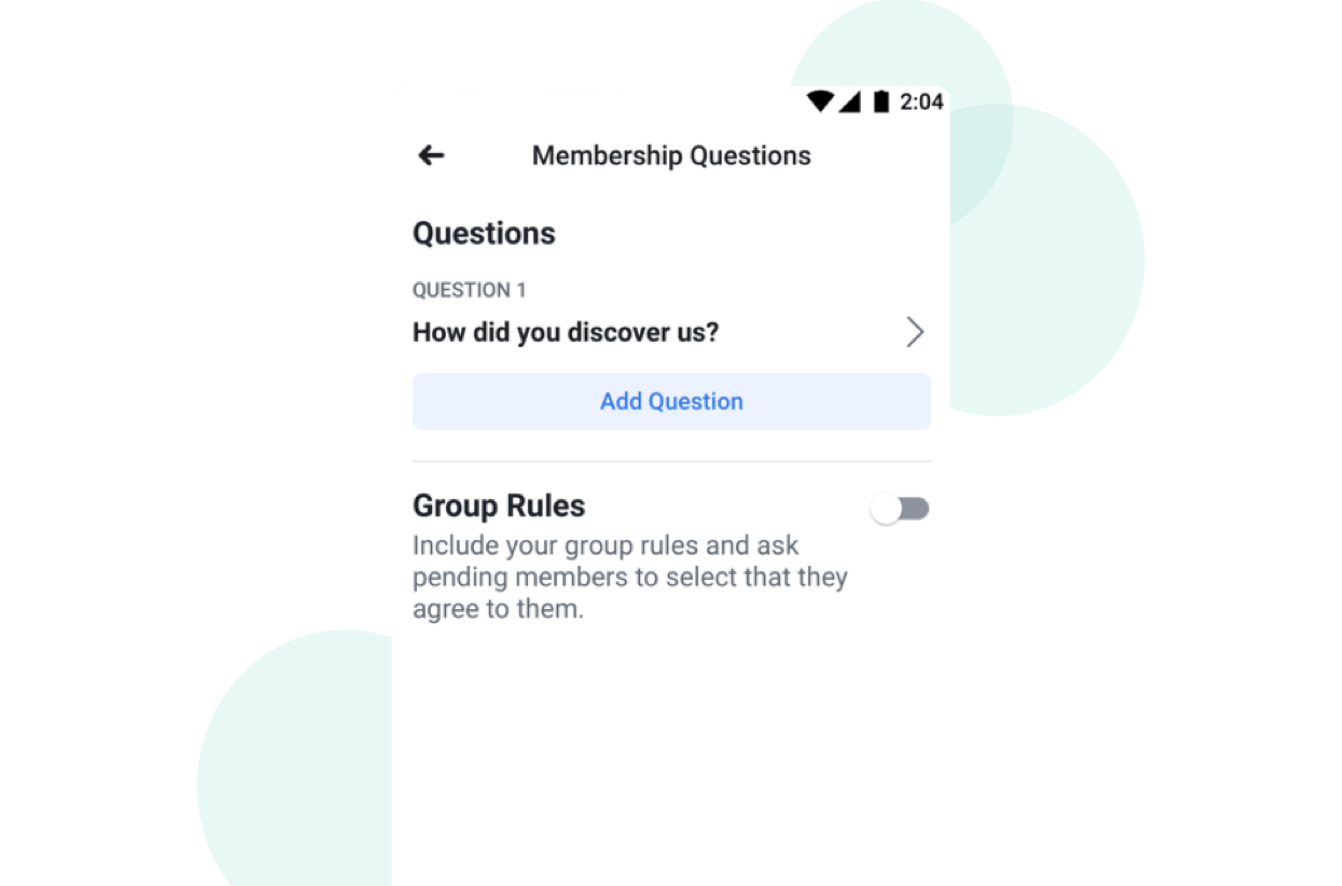
Basically, you can ask folks any number of questions when they first join your Group, including this magic question:
“If you’d like to join our email newsletter to stay in the loop, what’s your email address? We’ll send you occasional, educational content on [Group topic].”
You’ll find that a portion of new members will happily give your email list a try. To set this up, you can use software like Group Collector to automatically sync emails from your Facebook Group into your email marketing platform:
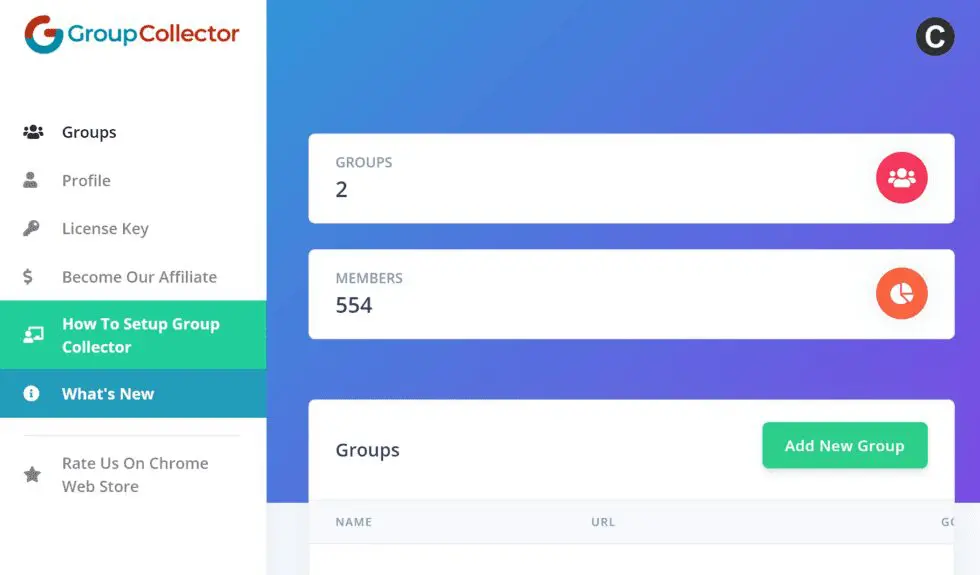
Powerful, right?
Last Word on Growing From 0 to 10,000 Members
Hopefully you learned how to grow a Facebook Group with a zero-dollar budget! It might seem intimidating, but all it takes is time, patience and a little effort (plus some help from your earliest members).
To summarize, here are the five steps you should be following to take your Facebook Group from 0 to 10,000 members without spending a single cent:
- Come up with a compelling theme for your Group — something that people will want to discuss and that you can offer genuine expertise on.
- Give people a reason to join. Tell potential members about the fantastic content you create and the exclusive giveaways and offers you run.
- Let your existing audience know that the Group exists, and encourage them to join (people who already follow your Facebook Page, read your blogs or watch your videos).
- Get in front of new audiences through guest blogging, influencer outreach, interviews and podcasts.
- Evangelize “early adopters” of your Group to bring in new members.
Follow these steps, iterate as necessary and watch your Facebook Group subscriber count grow!
If you’re ready to level up your brand via social media, Single Grain’s social media marketing experts can help!👇



